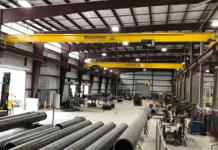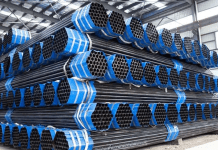The performance of a 500W heat sink device depends on several factors, including its size, material, and design. In general, a heat sink’s primary function is to dissipate heat away from a heat-generating component, such as a CPU or power supply, and transfer it to the surrounding environment.
A larger heat sink will generally have better performance than a smaller one, as it will have a greater surface area to dissipate heat. Similarly, a heat sink made from a material with high thermal conductivity, such as copper or aluminum, will be more effective at transferring heat than a material with lower thermal conductivity.
The design of the heat sink is also important, as it affects the amount of airflow around the fins, which can affect the heat dissipation rate. A heat sink with larger fins or a higher number of fins will generally have better airflow and cooling performance.
Assuming that the 500W heat sink device is designed and constructed properly, it should be able to effectively dissipate heat from a 500W heat-generating component and maintain a safe operating temperature. However, it’s important to ensure that the heat sink is properly installed and has adequate airflow around it to achieve optimal performance.
500w heat sink device design and its uses
The design of a 500W heat sink device will depend on the specific application and requirements of the heat-generating component it’s designed to cool. However, in general, a heat sink device used for dissipating 500W of heat will need to be relatively large, have a high thermal conductivity, and be designed to promote good airflow around the fins.
The most common heat sink design is a finned metal structure that’s attached to the heat-generating component, such as a CPU or power supply. The heat sink will typically be made from a material with high thermal conductivity, such as copper or aluminum, and will have a large surface area to maximize heat dissipation.
A 500W heat sink device may be used in a wide range of applications, including:
- Computer CPUs: High-performance CPUs generate a lot of heat, and a heat sink is needed to keep them cool and prevent damage to the component.
- Power supplies: Power supplies generate heat as they convert AC power to DC power, and a heat sink is needed to keep them cool and maintain their efficiency.
- LED lighting: High-power LED lighting fixtures generate a lot of heat, and a heat sink is needed to prevent the LEDs from overheating and burning out.
- Industrial equipment: Many industrial machines and equipment generate significant amounts of heat, and a heat sink may be used to keep the components cool and maintain their performance and reliability.
Nonetheless, To promote good airflow around the fins, the heat sink may be designed with a fan, which can help to move hot air away from the fins and bring in cooler air from the surrounding environment. Alternatively, the heat sink may be designed with a passive cooling system, such as heat pipes, which use a combination of conduction and convection to transfer heat away from the heat-generating component and dissipate it into the environment.











